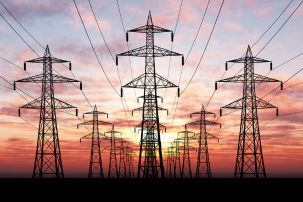Lesson summary
In this activity students complete a whole school energy audit. Using their data, students calculate usage, kilowatts and greenhouse gas emissions. Students make key recommendations on how energy use could be reduced at their school. They then link their findings to home-based projects that reduce energy usage.
Learning Intentions:
Students will...
- recognise the relationship between energy use and greenhouse gas emissions.
- understand the relationship between watts, watt hours and kilowatts.
- understand how to apply Emission Factor figures to the calculation of greenhouse gas emissions.
- recognise where energy consumption can be reduced at their school and home.
Lesson guides and printables
Lesson details
Curriculum mapping
Australian Curriculum content descriptions:
Mathematics Year 5:
- Choose appropriate units of measurement for length, area, volume, capacity and mass (ACMMG108)
Geography Year 5:
- Locate and collect relevant information and data from primary and secondary sources (ACHASSI095)
- Reflect on learning to propose personal and/or collective action in response to an issue or challenge, and predict the probable effects(ACHASSI104)
Science Year 6:
- Scientific knowledge is used to inform personal and community decisions (ACSHE220)
Geography Year 6:
- Locate and collect relevant information and data rom primary and secondary sources (ACHASSI123)
- Reflect on learning to propose personal and/or collective action in response to an issue or challenge, and predict the probable effects (ACHASSI132)
Cross curriculum priorities:
Sustainability – OI.3 – Sustainable patterns of living rely on the interdependence of healthy social, economic and ecological systems. OI.6 – The sustainability of ecological, social and economic systems is achieved through informed individual and community action that values local and global equity and fairness across generations into the future. O1.7 Actions for a more sustainable future reflect values of care, respect and responsibility, and require us to explore and understand environments. O1.9 Sustainable futures result from actions designed to preserve and/or restore the quality and uniqueness of environments.
General capabilities: Numeracy, Critical and creative thinking
Syllabus Outcomes: GE3-4, ST3-6PW, MA3-10MG, MA3-11MG, MA3-12MG, MA3-9MG, MA3‑1WM MA3‑2WM, MA3‑3WM.
Connecting lessons: AuSSI Transport Audit.
Resources required
- Student worksheet
- Internet access
- School electricity and gas bills
- Energy factsheets: Energy cheat sheet, Calculating GHG emissions and Typical Power Ratings.
Additional Info
This lesson can be used when working on the Energy Module of ResourceSmart AuSSI Vic Certification. By completing this lesson you will have completed the following actions:
Energy Checklist Compulsory Actions:
- A1.1 – Have you completed an audit to assess energy usage around your school?
- A1.2 – Have you collected data on past energy usage for at least two years?
- A1.3 – Has this data been entered as your baseline data, and any anomalies explained?


Welcome back!
Don't have an account yet?
Log in with:
By signing up to Cool.org you consent and agree to Cool's privacy policy to
store, manage and process your personal information. To read more, please see
our privacy policy here(Opens in new tab).
Create your free Cool.org account.
Many of our resources are free, with an option to upgrade to Cool+ for premium content.
Already have an account?
Sign up with:
By signing up to Cool.org you consent and agree to Cool's privacy policy to
store, manage and process your personal information. To read more, please see
our privacy policy here(Opens in new tab).